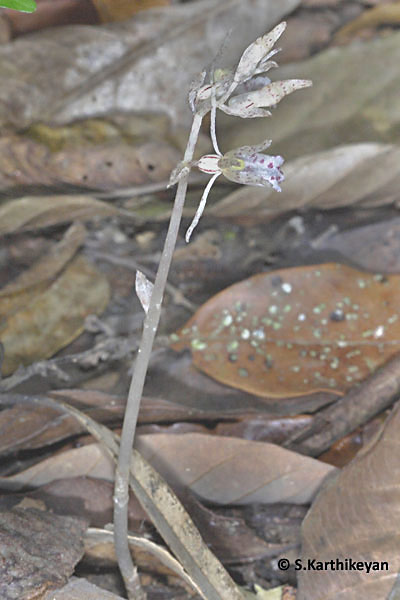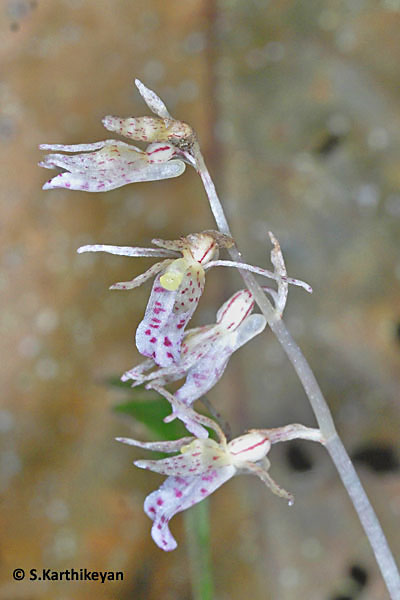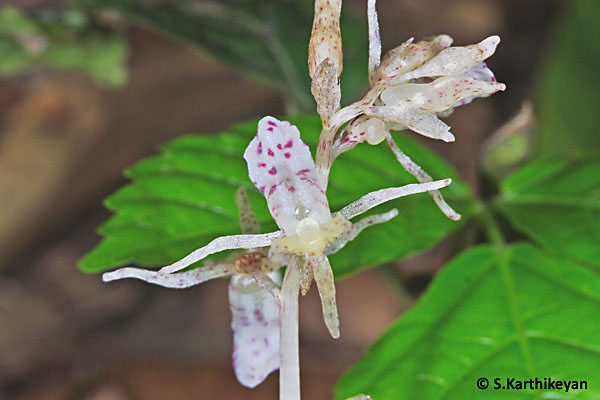Orchids are a very diverse family with about 25000 species, making them one of the largest families of flowering plants in the world! This being the case, one should expect an amazing variety and also several interesting and unique adaptations among orchids.
I encountered this very interesting orchid, on the same on the same trip to Coorg when I saw and photographed Balanophora fungosa. As I was walking on the track in the forest, I stumbled (well almost literally!) upon this orchid. An inconspicuous slender stalk growing on the middle of the path caught my attention. By the time what I saw registered in my head, I had walked ahead a few paces. Retracing my steps, I returned to the spot where the orchid was growing.
I was completely surprised by what I was seeing. More so, since it had been a good two decades since I had seen it last. Looking around I saw a few more of these slender stalks. The first time I had seen this orchid was in the Anaimalai Wildlife Sanctuary (now called as Indira Gandhi Wildlife Sanctuary and National Park) in Tamil Nadu. Interestingly, both these places are high rainfall areas and both the times that I had seen this orchid happened to be in the month of December.
This orchid – the Ghost Orchid Epipogium roseum – is similar to all others in it basic characters. It is different from most other orchids in the fact that this one does not produce any leaves at all. This also means that it cannot photosynthesise! So where does the orchid derive its nutrition from? When I had first seen it and had managed to get its identity, I had also tried to understand the plant a bit more than just appreciating its delicate beauty.
I learnt that these orchids are entirely dependant on fungi to satisfy their requirement since they cannot produce their own food! Consequently, they grow in areas where the soil has a high organic content in a stage of decay. The flowers last for all of 2 weeks or so before wilting away. These orchids are easily missed due to the kind of places that they grow in and their ephemeral nature. During the rest of the year, the plant remains as a rhizome (underground stem) waiting for the next flowering season!


